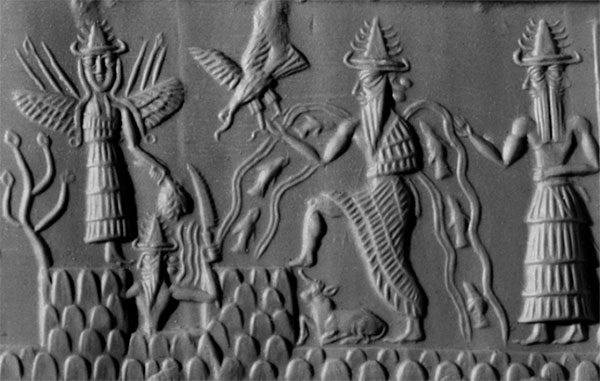
Confessions of a Technophobe, New Series 12
For many generations the United States has been the mecca for the dispossessed. What most people don’t know is that South Africa has also been a haven for immigrants, both legal and illegal, since the 1600s.
These consisted of mainly British, Germans, French, Portuguese, Greeks, Italians, Jews from Lithuania, Russia and many other European countries. More recently the major influx has been Zimbabweans, Nigerians, Congolese, etc. They mostly headed towards the fabled Egoli, City of gold – Johannesburg. Even at the height of Apartheid, Africans from other parts of Africa perceived South Africa as the most dynamic country on the African continent. Both legal immigrants who did the paperwork and illegal immigrants who crossed the borders into “Sud D’Afrique” sought to benefit from the perceived wealth of the country. Many attempted the hazardous journey through the Kruger National Park, the largest game reserve in the world on the borders of Mozambique and Zimbabwe. The lions and leopards were waiting. The refugees tasted good.
All of which brought me to the thought that for a few blogs I might dwell on which nationalities have arrived and settled in South Africa, many of whom have gone on to carve out successful careers in their adopted land. But that’s another story. As I thought about the influx of other nationalities into the bottom part of Africa, I realized that the history of this influx into, arguably, the most beautiful country in the world goes far, far back.
At this point I must comment on truth and accuracy. I’m no historian, I am simply writing about things I have experienced or learned about during my years in Africa. As our beleaguered world has been overwhelmed by lies and fake news, it is very difficult to differentiate between truth and falsehoods. The seemingly wonderful world of the Internet has increased our ability to communicate with each other but sadly it has also increased contradictions to almost any subject under the sun. How in the hell do we know what to believe? My personal solution is to listen to my gut feelings on any subject, then find out what I can about it and try to decide on the basis of common sense.
Having said that, I’m briefly going to go back to the earliest records of “Hominids” on the planet. Hominid is the name for the link between the Australopithecine and the genus “Homo” (Man.)
In 1927 Australian Professor Raymond Dart, based in Johannesburg, discovered the Taung skull in a remote part of the Northern Cape Province. It was dated to be between 2.3 and 2.8 million years old. Raymond Dart’s discovery and later in 1936 Robert Broome’s find of another skull in South Africa – named Mrs. Ples (2.5 to 2.8 million years old) – were both pooh-poohed by the Western-oriented scientific community. Despite the prejudice against the origin of Man having occurred in Africa, this has been reluctantly accepted by Western science. Outside of Johannesburg, on the site of major palaeontologic finds, an area has been declared “Cradle of Humankind.”
However: there has been another possibility as to the origin of Man. Amazingly it features South Africa once again. Zecharias Sitchin, a Russian-born Jew, settled in Israel and eventually became interested in the ancient Sumerian civilization. He then gained access to what are known as the Babylonian tablets which contain the story of the early history of Man. He is not the only person to have studied the tablets and translated them. All of these researchers, with certain variations, have reached similar conclusions. In brief, this is what has emerged.
By the way, this could well be another conspiracy theory – but there is enough physical evidence to suggest it could be real. As a number of respected scientists have maintained that the so-called evolutionary link between the Hominids and Man is simply not feasible, I think it’s worth examining an alternative contained in ancient writings that explains another way in which Mankind has appeared on this planet.
The writings are dated at 450,000 years ago. (I’ve written about this in some detail in an earlier blog so I’ll keep this version short.) The tablets tell the story of the planet Niburi that travels on a massive elliptical orbit, taking it every 3,500 years through our solar system. Niburi had a problem with its ozone layer, similar to that of Earth. The name of the fairly advanced race on the planet was the Anunnaki.

The Anunnaki discovered that sprinkling fine gold dust onto the ozone layer helped to repair it. Lacking gold on their planet, they searched for a rich source of the metal, finding that planet Earth was their most likely source of gold. They established a base in the Middle East in what was called Mesopotamia (between the rivers Euphrates and Tigris). They soon realized that the area around the base lacked any significant gold deposits and sent out search parties to find a major source of gold, which led them to South Africa, probably via Zimbabwe (the Zimbabwe ruins).
They started successfully mining the wealthiest source of gold on the planet; but being a race unused to the hard physical labor required, they sought any race or creature on Earth that they could subjugate and use as slave labor to mine the gold. At that period the nearest they could find to a sentient creature who they thought could be trained was the Hominid – but this experiment failed.
The human race did not exist at that point. After many experiments with genetic variations which resulted in the weird and often grotesque creatures described in Greek mythology, such as a humanoid body with a goat’s head or a human head and torso with a horse’s body and legs, they tried a different approach.
Their genetic scientists inseminated an Anunnaki woman with sperm from a Hominid, resulting in a reasonably sentient creature that became the slave race used primarily to mine gold. The geneticists modified these creatures so that they would not become a threat to the Anunnaki. This involved reducing the lifespan of the slave species – who were the forerunners of the human race – from the Anunnaki’s lifespan of around 900 Earth years to at most 70 years. The Bible refers to this.
Later the Anunnaki men found the slave women to be very attractive and interbred with them, creating an intellectually superior group that became the elite of the humans. It is interesting to note that as Anunnaki were appointed as group leaders in every human settlement, they were described by humans as gods from the skies. It is possible that the Hindu concept of many gods arose from that situation. Later Marduk, an Anunnaki leader, realized the potential of having a religion or religions as a form of control over the human population. He decided that a single god would be more effective than the multiple gods.
So might the earliest human species have emerged from Southern Africa where gold mining was centered. South African writer/explorer Michael Tellinger in recent years has uncovered the remnants of a chain of six large cities spreading south from the Zimbabwe ruins to a point near the current town of Rustenberg, south of Johannesburg. He believes that these were the homes of the slaves who did the mining.
To add to the confusion, an American-based scientist came up with the theory that Indians started to explore the world, not to colonize but to find precious minerals. They left evidence of early mining operations, mostly in the region around Johannesburg, the source of the world’s richest agglomeration of gold. It is also interesting to note that some words in both the Khoisan (Bushman) and Hottentot language have the same meaning and spelling as Indian words.
The Khoisan and Hottentots were the oldest of the human species to inhabit Southern Africa before the Bantu tribes from central Africa trekked south a few hundred years before the first whites colonized the Cape of Good Hope. Outnumbered, the Khoisan and the Hottentot retreated into semi-desert areas on the west coast of South Africa and Angola, where the few remnants of these little yellow men remain today.
So who were the first people to populate Southern Africa? What do you think? In my next blog I’ll move to more recent times starting with the Portuguese seafarers and followed by the Dutch who were the first Europeans to actually settle in South Africa.
Unlike the confusion, lies, and fake news that accompany so much of today’s human activity, the technology of ExoBrain stands out as a beacon of hope of creating a paradigm shift. Actually more than hope, it WILL happen and will serve to reestablish some stable data in our crazy dysfunctional world.

